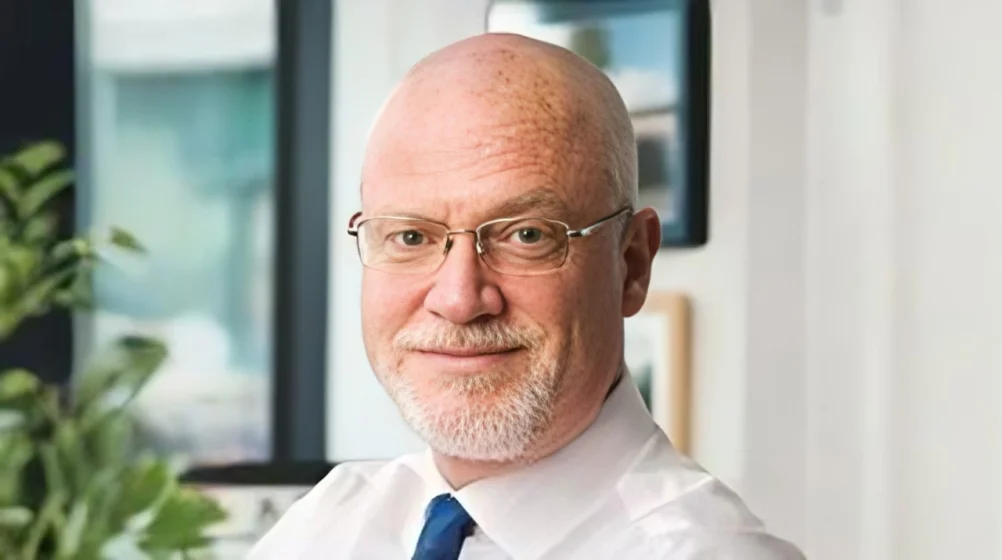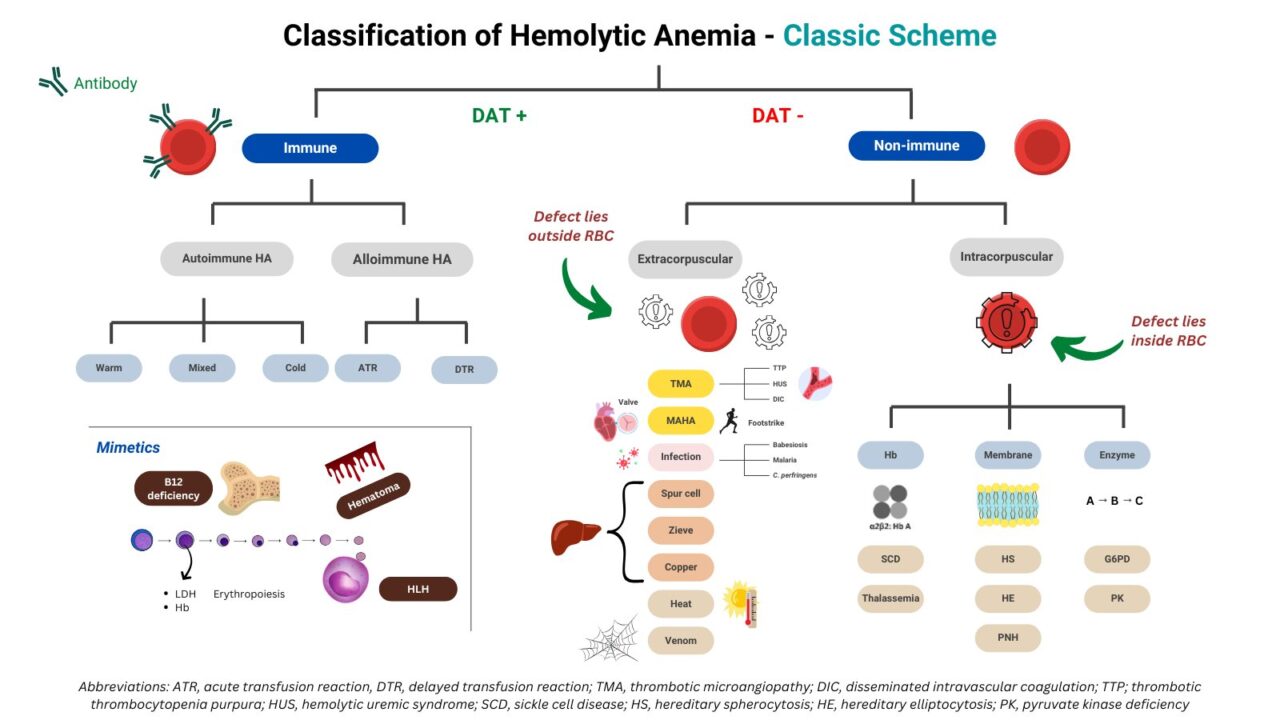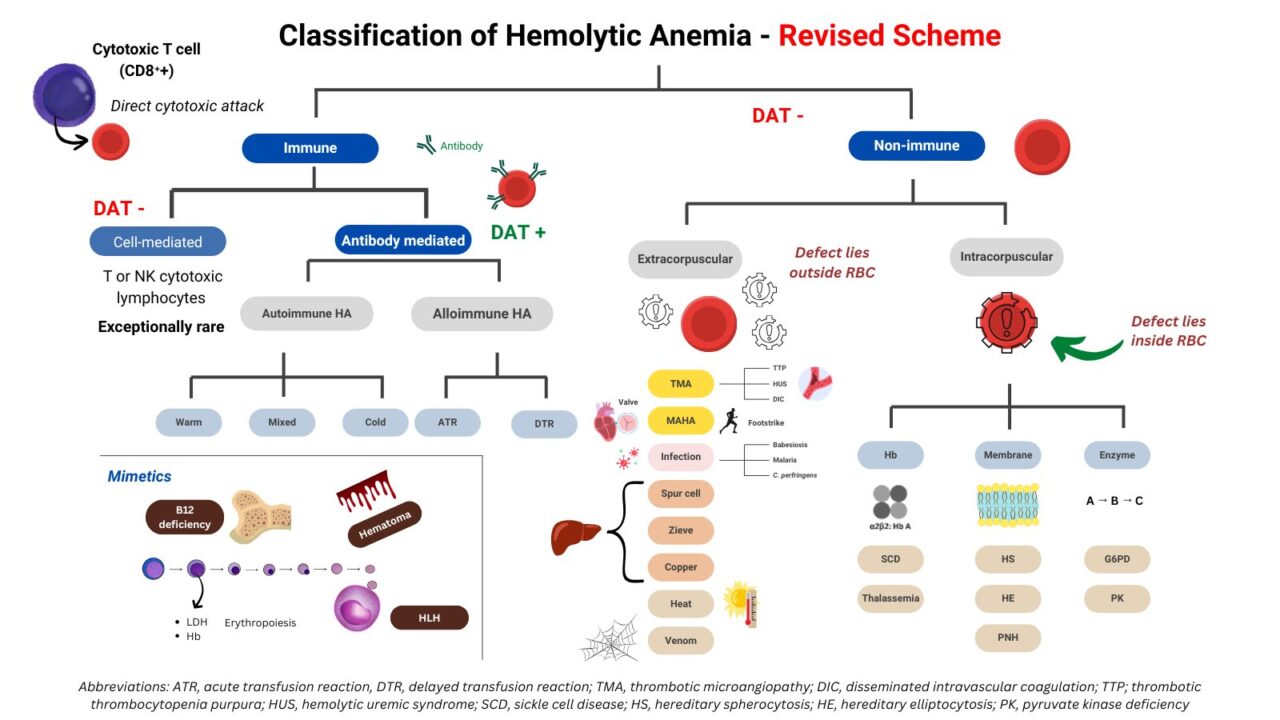
William Aird: Rethinking Hemolysis Classification
William Aird, Professor of Medicine at Harvard Medical School, posted on X:
“1/6
RETHINKING HEMOLYSIS CLASSIFICATION
I recently saw an incredibly rare but fascinating case of T-cell large granular lymphocytic (T-LGL)–mediated, DAT-negative hemolysis.
It prompted me to rethink how we classify hemolytic anemia and revise the schematic accordingly.

2/6
We usually divide hemolysis into immune and non-immune:
- Immune → antibody-mediated (autoimmune or alloimmune), DAT-positive
- Non-immune → mechanical, microangiopathic, infectious, toxic
That framework covers >99% of cases.
3/6
But what about the ultra-rare, cell-mediated form, when cytotoxic T or NK cells directly attack red cells or precursors?
- No antibodies.
- No complement.
- DAT-negative.
Mechanism: perforin/granzyme or Fas–FasL–mediated cytotoxicity.
4/6
These are not theoretical.
Occasional cases of LGL leukemia have shown evidence of direct, antibody-independent RBC destruction, essentially a cell-mediated immune hemolysis.
Vanishingly rare, but biologically fascinating.
5/6
So, I’ve updated the diagram.
Under “Immune hemolysis,” I’ve added a side branch:
“Cell-mediated (T/NK-cell cytotoxicity, DAT-negative)”
It’s a footnote in clinical reality but makes the schema more complete for those who enjoy a good hematologic deep dive.

6/6
If you teach or think about hemolysis, this nuance helps connect the adaptive (antibody-mediated) and cellular (cytotoxic) arms of immunity.
Sometimes the exceptions are what remind us how beautifully complex blood can be.”
Stay updated with Hemostasis Today.
-
Dec 19, 2025, 06:13Anna Aldehag Reflects on Her 12 Year Leadership in Sweden National Board of Health and Welfare
-
Dec 19, 2025, 05:54Abdul Mannan: APTT Mixing Studies Confuse a Lot of People
-
Dec 18, 2025, 23:14The “Normal” FVIII Level Trap in Females with Haemophilia
-
Dec 18, 2025, 23:11WFH Expands Multidisciplinary Bleeding Disorder Training in Vietnam
-
Dec 18, 2025, 17:13Daria Camilli on EuroBloodNet and EHC Collaboration for Bleeding Disorders
-
Dec 18, 2025, 16:50Marie Cambot on Innovhem’s Quantification of The HbF/HbS Ratio for SCD
-
Dec 18, 2025, 16:26Yogesh Rathod on Hematological Issues and ICU
-
Dec 18, 2025, 16:09Carlos Doti: I’m Reminded Why ASH is Such a Powerful Close to The Year
-
Dec 18, 2025, 15:23Michael Hadley: Well-Timed ACC Statement Just Out in JACC Journals
